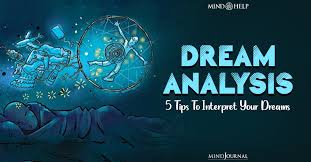Unlocking the Secrets of Dream Interpretation: Understanding the Language of the Unconscious
Dreams have long fascinated and mystified humanity, dreams interpretation serving as windows into the subconscious mind. From ancient civilizations to modern psychologists, interpreting dreams has been both an art and a science, offering insights into our innermost thoughts and emotions.
What Are Dreams? Dreams are complex mental experiences that occur during sleep, characterized by a mixture of images, thoughts, emotions, and sensations. They often feel vivid and real, yet their meanings can be elusive and open to interpretation.
Theories of Dream Interpretation Throughout history, various theories have emerged to explain why we dream and what our dreams mean:
- Freudian Theory: Sigmund Freud, the father of psychoanalysis, proposed that dreams are manifestations of unconscious desires, fears, and conflicts. He believed that analyzing dreams could reveal repressed thoughts and help resolve psychological issues.
- Jungian Theory: Carl Jung expanded on Freud’s ideas, suggesting that dreams tap into a collective unconscious shared by all humans. Jungian dream analysis focuses on archetypes, symbols, and the integration of the conscious and unconscious mind.
- Activation-Synthesis Theory: Proposed by J. Allan Hobson and Robert McCarley, this neurobiological theory posits that dreams are a result of random neural activity in the brainstem during REM (rapid eye movement) sleep. The cortex then synthesizes these signals into coherent stories and images.
Common Dream Symbols and Their Meanings While dream interpretation is highly personal and context-dependent, some symbols appear frequently across cultures and individuals:
- Flying: Often associated with freedom, liberation, or the desire to escape from a situation.
- Water: Represents emotions, purification, or the subconscious mind.
- Teeth Falling Out: Can symbolize anxiety about appearance, communication issues, or a fear of losing control.
Tips for Interpreting Your Dreams Interpreting dreams requires sensitivity to personal context and emotions. Here are some tips to help you unlock the meanings of your dreams:
- Keep a Dream Journal: Record your dreams immediately upon waking to capture details and emotions.
- Identify Symbols and Themes: Pay attention to recurring symbols or themes in your dreams and explore their possible meanings.
- Consider Your Feelings: Reflect on the emotions you experienced during the dream and how they relate to your waking life.
- Seek Patterns: Look for patterns or connections between your dreams and your thoughts, feelings, or experiences.
Conclusion Dream interpretation is a fascinating journey into the depths of the subconscious mind, offering valuable insights into our fears, desires, and unresolved issues. While there are various theories and approaches to understanding dreams, the key lies in exploring your own unique dream language and discovering what messages your subconscious is trying to convey.

